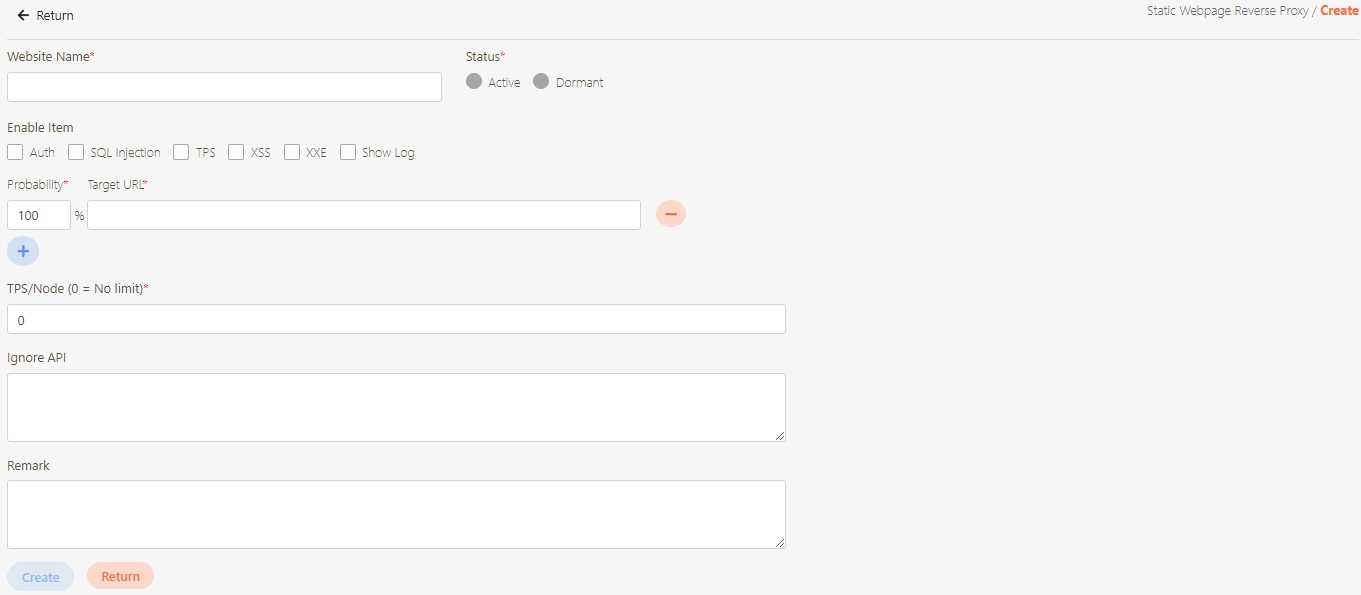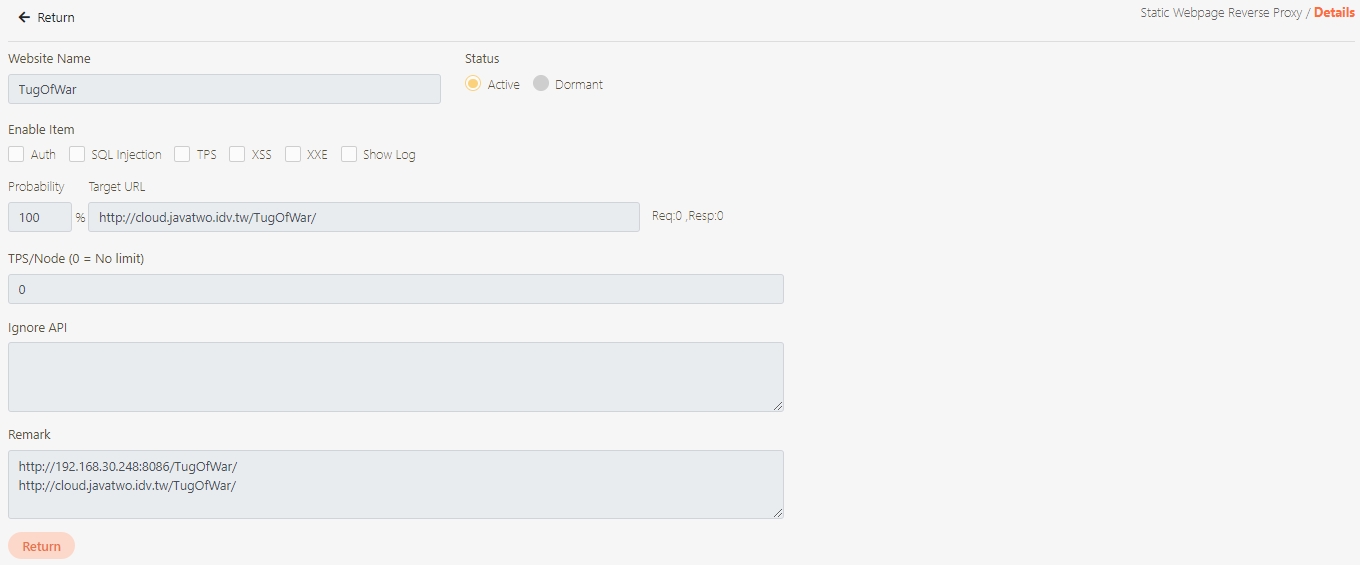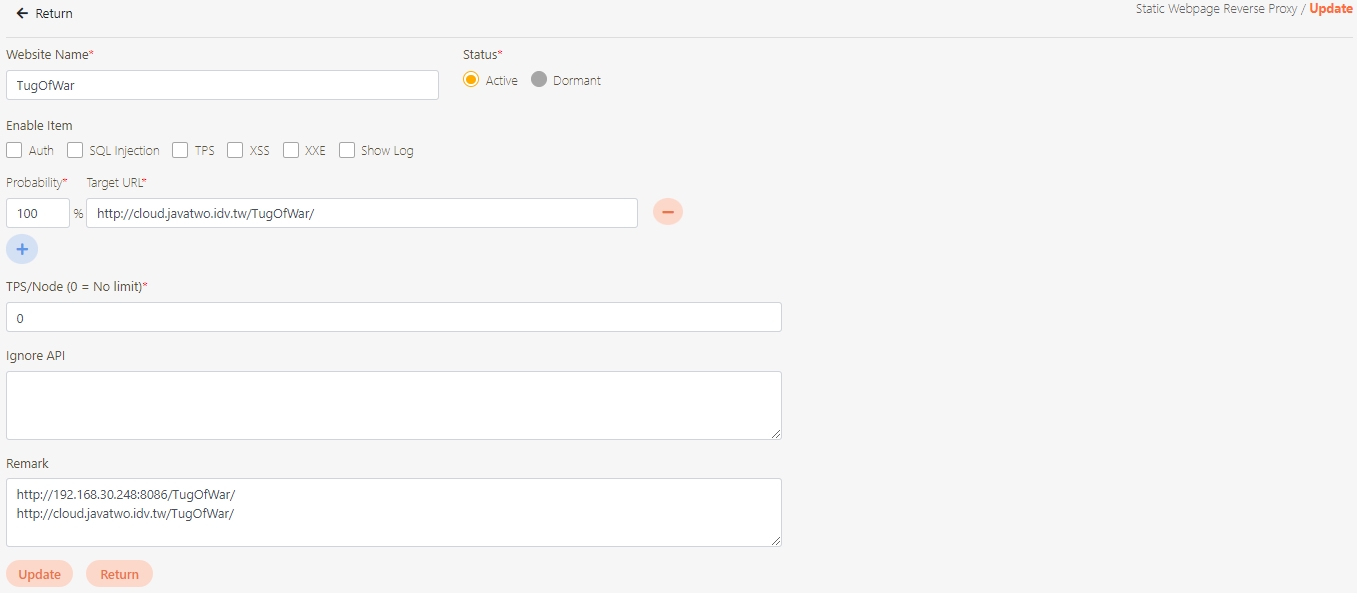Static Webpage Reverse Proxy
Path: System Configs >Static Webpage Reverse Proxy
Static web reverse agent is an intermediary service used to process static web resources, providing features such as requested distribution, load balancing, caching, and security to improve site performance and provide a better user experience.

Create Static Webpage Reverse Proxy
Click Create to access the creation page.

Fill in the data or make selections as instructed below. The fields marked with “*” are required.
Website Name*: An identifiable name.
Status*: Enable and disable the static web page reverse agent.
Enable Item: Multiple selections allowed, including Auth / SQL Injection / TPS / XSS / XXE / Show Log.
Probability*:For HA (High Availability), requests will be routed to the specified URL based on the given probability.
Target URL*:Specify the URL of the website.
TPS/Node (0 = No limit)*: The number of transactions each node can process per second.
Ignore API: Excluded API.
Target Context Path: The web context path.
Remark: The description of this site.

Created sites can be proxied by digiRunner, with the web address being https://{{digiRunner URL}}/website/customized name/.
Search Static Webpage Reverse Proxy
Search for a static webpage reverse proxy by entering keywords.

View Static Webpage Reverse Proxy
Search for the static web page reverse agent to view details, and click on the![]() icon to access the Details page.
icon to access the Details page.


Update Static Webpage Reverse Proxy
Search for the static web page reverse agent to modify, and click on the
 icon to access the update page.
icon to access the update page.

Modify the information, and click Update to save and exit.

Delete Static Webpage Reverse Proxy
Search for the file to delete, and click on the
 icon to proceed.
icon to proceed.

A warning prompt displaying the message “Confirm Delete?” will pop up. Click Confirm to delete the Static Webpage Reverse Proxy and exit.

Was this helpful?
